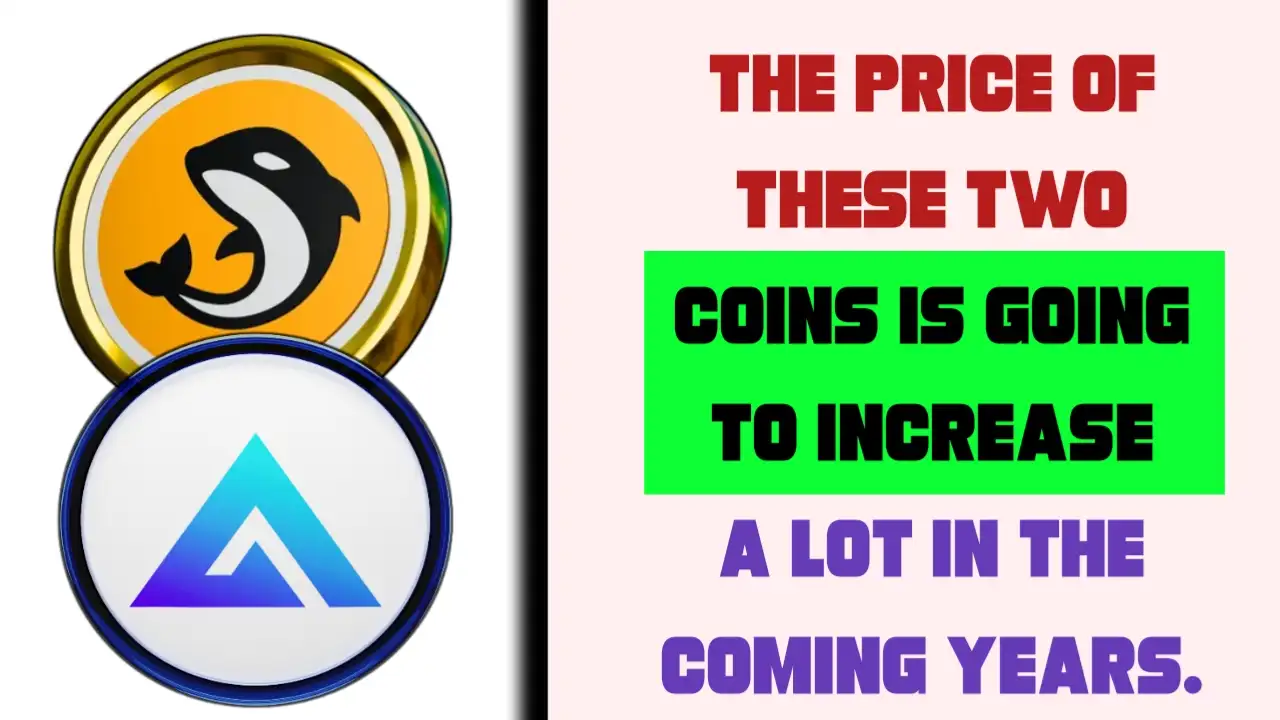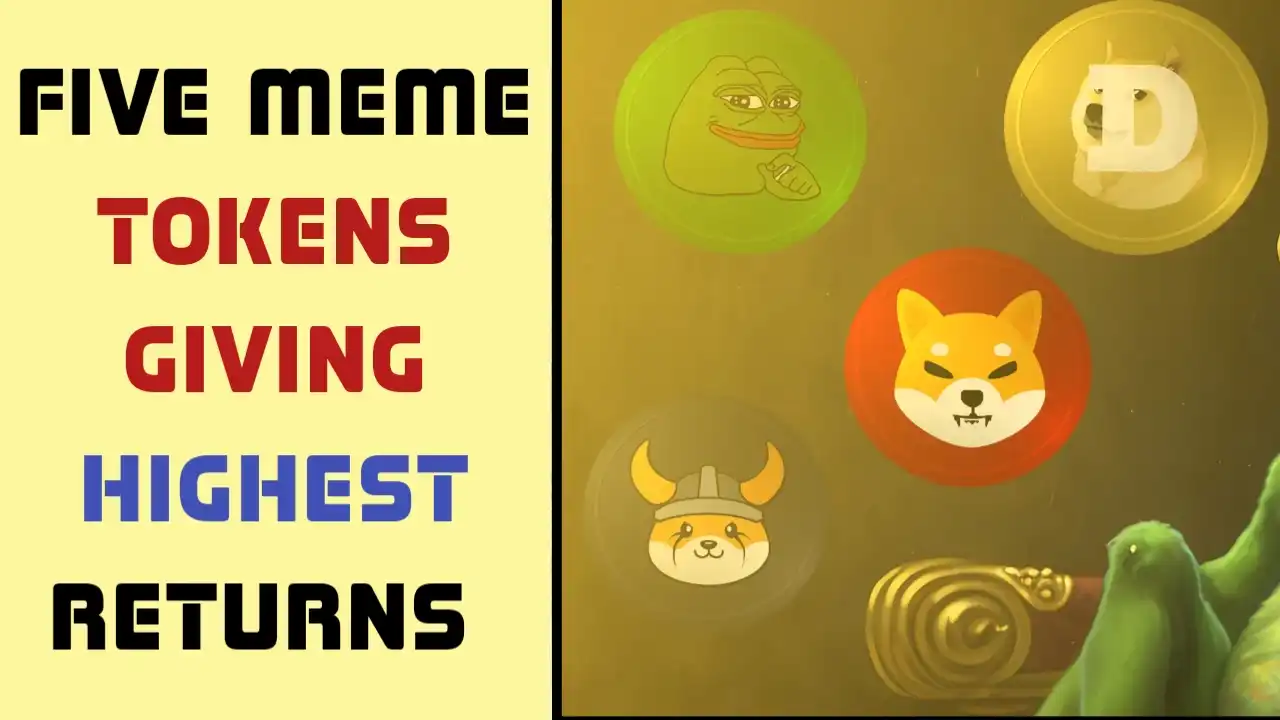WEB 3: Crypto Web 3, or Web3, is a concept that refers to the next evolution of the internet, based on blockchain technology and decentralization. It integrates cryptocurrency, decentralized networks, and smart contracts to offer a more user-centric, transparent, and secure digital experience. In Web3, control over online data, assets, and interactions is shifted away from centralized entities like tech companies and governments, and given to individuals.
What is Web 3
Crypto Web 3 (or simply Web3) is the next evolution of the internet, designed to be decentralized and user-controlled, in contrast to the current internet (Web 2.0) which is dominated by centralized platforms. Below, I’ll explain Crypto Web 3 in several different ways to give you a comprehensive understanding.
1. Technical Explanation:
Crypto Web 3 uses blockchain and cryptocurrencies to build a decentralized internet. Unlike Web 2.0, where companies like Google, Facebook, and Amazon control the data and infrastructure, Web3 allows users to interact directly with each other using cryptographic technologies. Smart contracts, decentralized applications (dApps), and tokens (like Ethereum or Bitcoin) power this new web.
- Blockchain: A distributed ledger that stores transaction data in blocks, which are linked in a chain.
- Cryptocurrencies: Digital currencies like Bitcoin or Ethereum, used to facilitate transactions within Web3.
- Smart Contracts: Self-executing contracts with the terms directly written into code, ensuring automatic execution without a middleman.
2. Layman’s Explanation:
Web3 is like a new version of the internet where users are in control. Imagine the current internet (Web2) as a playground where big companies own all the toys and rules. Web3 is a new playground where everyone can share the toys, make their own rules, and even earn rewards for playing.
In Web3, you don’t need a bank to send money, a social media company to post photos, or an email provider to send messages. You can do all of that directly with others, using cryptocurrencies and decentralized apps (dApps) that run on blockchain.
3. Web 2.0 vs. Web 3.0 Comparison:
- Web 2.0: Centralized. Platforms like Facebook, Google, and Amazon control user data, services, and access. Users interact through intermediaries, and personal data is owned by these companies.
- Web 3.0 (Web3): Decentralized. Instead of relying on a single company or authority, Web3 allows peer-to-peer interactions. Users control their data, identity, and transactions. Web3 apps (dApps) are powered by blockchain, ensuring transparency and security without middlemen.
4. Economic Perspective:
Web3 is a shift in the economy from centralized platforms (like banks or tech companies) to decentralized peer-to-peer interactions. In this economy, individuals can directly exchange value using cryptocurrencies. For example, instead of using a bank to send money to someone, you can send crypto (like Bitcoin or Ethereum) directly to that person via a decentralized platform.
This disruptive model allows people to have direct ownership of their assets (such as NFTs), stake tokens for rewards, and govern applications or organizations through Decentralized Autonomous Organizations (DAOs).
5. Ownership and Control Explanation:
In the current Web (Web 2.0), big companies like Facebook, Google, and Amazon own your data. You don’t truly “own” the content you post online. For example, Facebook controls your posts, photos, and even the data about you.
In Crypto Web 3, YOU own your data. With the help of cryptographic keys and blockchain technology, you can control your identity, your transactions, and even your content. For instance, you can create a piece of art as a Non-Fungible Token (NFT) and sell it directly, keeping all the profits and control over that asset.
6. Social Impact:
Web3 aims to empower individuals by putting control back in the hands of the people. In the current Web2 environment, centralized platforms often engage in censorship, data breaches, and unfair policies. Web3 offers a censorship-resistant environment, where your content, assets, and identity cannot be controlled or taken down by a central authority.
Additionally, Web3 enables the creation of Decentralized Autonomous Organizations (DAOs), which allows communities to make collective decisions without a centralized leader, fostering more democratic governance in online platforms.
7. Practical Example (Decentralized Finance – DeFi):
In DeFi (Decentralized Finance), Web3 replaces traditional financial systems like banks and brokers with smart contracts on blockchain networks like Ethereum. For instance, in Web3, you can:
- Lend or borrow money without a bank.
- Earn interest by staking your tokens in decentralized platforms.
- Trade cryptocurrencies without using centralized exchanges like Coinbase.
These activities happen on platforms that are decentralized, transparent, and secure, without needing a traditional financial intermediary.
What are the benefits of Web 3 in crypto?
In the context of cryptocurrency, Web 3 offers a range of unique benefits that transform how users interact with digital assets, manage their finances, and participate in decentralized ecosystems. These benefits include enhanced security, control over assets, financial inclusion, and more. Here’s a breakdown of how Web 3 benefits the crypto space specifically:
1. Decentralized Control of Assets
In traditional Web2 systems, platforms like banks or exchanges control user funds. With Web 3, cryptocurrency transactions and asset storage are decentralized, meaning users have full ownership and control of their digital assets without relying on intermediaries.
- Benefit: Users are the sole owners of their cryptocurrencies, tokens, and private keys, reducing the risk of centralized platforms mismanaging funds or being vulnerable to hacking.
2. Increased Privacy and Security
Web 3 leverages blockchain and cryptography to ensure that transactions are secure and users’ data remains private. In traditional systems, personal data is often stored on centralized servers, making it susceptible to breaches. In Web 3, transactions are verified on decentralized ledgers, and users can maintain privacy through encryption techniques.
- Benefit: Enhanced privacy and security for crypto transactions, reducing exposure to identity theft, hacks, and data breaches.
3. Peer-to-Peer Transactions (P2P)
In Web 3, cryptocurrency transactions occur directly between users without intermediaries. Traditional financial systems require a third party (like a bank or payment processor) to facilitate transfers, which may incur fees and processing delays. Web 3, powered by blockchain technology, enables instant, borderless transactions at lower costs.
- Benefit: Faster, cheaper, and more efficient peer-to-peer transactions across borders, without needing a middleman like a bank or payment processor.
4. Decentralized Finance (DeFi)
Web 3 enables the rise of DeFi platforms where users can lend, borrow, trade, and earn interest on cryptocurrencies without relying on centralized financial institutions. DeFi offers users the ability to interact directly with smart contracts and decentralized protocols to access financial services.
- Benefit: Financial inclusion, allowing users globally to access banking, loans, and trading services, especially in regions where traditional banking infrastructure is lacking.
5. Ownership and Tokenization of Assets
Web 3 allows for the tokenization of assets, meaning that both real-world assets (like real estate or art) and digital assets (like NFTs) can be represented and traded on the blockchain. Users can own, trade, and monetize digital items or even fractionalized ownership of physical assets.
- Benefit: New opportunities for asset ownership and investment, enabling fractional ownership, transparent transactions, and efficient asset exchanges.
6. Non-Fungible Tokens (NFTs)
NFTs are used to represent everything from digital art to collectibles and gaming items.
- Benefit: Creators can monetize their work directly, while collectors can invest in unique, verifiable digital assets. NFTs provide an entirely new way to trade, collect, and own digital items.
7. Smart Contracts and Automation
Smart contracts in Web 3 are self-executing contracts where the terms are directly written into code. These contracts automatically execute actions (such as transferring tokens or initiating transactions) once certain conditions are met, without the need for intermediaries. Smart contracts are essential in areas like DeFi, NFTs, and tokenized governance.
- Benefit: Reduced need for intermediaries and more reliable, transparent, and automated transactions.
8. Decentralized Exchanges (DEXs)
In Web 3, users can trade cryptocurrencies on decentralized exchanges (DEXs) like Uniswap or PancakeSwap. These exchanges operate without a central authority and rely on blockchain technology to allow peer-to-peer trades, often without the need to deposit funds into an exchange wallet.
- Benefit: More control over assets during trading, fewer fees, and no need to trust a centralized exchange, reducing the risk of hacks or fraud associated with centralized exchanges.
9. Earn Passive Income (Staking & Yield Farming)
Web 3 enables users to earn passive income on their crypto holdings through staking (locking up crypto to support a network’s security and operations) or yield farming (providing liquidity to DeFi platforms in exchange for rewards). These mechanisms are a core part of the decentralized finance ecosystem.
- Benefit: Earning passive income through crypto holdings, often with better returns than traditional financial systems or savings accounts.
10. Tokenized Governance (DAOs)
Web 3 introduces Decentralized Autonomous Organizations (DAOs), where token holders participate in the decision-making process of a project or platform. DAOs give users the ability to vote on proposals and changes, allowing them to have a say in the future direction of a crypto project.
- Benefit: Democratic governance, where the community, rather than a central authority, makes important decisions about a project or platform.
11. Global Financial Inclusion
Web 3, powered by cryptocurrencies and blockchain, eliminates the need for traditional banking systems and financial intermediaries. This provides greater financial inclusion by allowing anyone with internet access to participate in global finance, regardless of their location or financial status.
- Benefit: Global access to financial services, which is especially crucial for people in underserved or unbanked regions who have limited access to traditional banking infrastructure.
12. Interoperability Between Blockchains
Web 3 facilitates interoperability between different blockchains, allowing for seamless transfer of assets and information across various platforms. This enables users to interact with multiple decentralized applications (dApps) without being limited to a single blockchain ecosystem.
- Benefit: Cross-chain compatibility, which broadens the range of opportunities for users and enables smoother interactions between different blockchain networks and platforms.
13. Earning Rewards for Participation
In Web 3, users are rewarded for participating in decentralized networks or contributing to the ecosystem. Whether it’s by providing liquidity to DeFi platforms, validating transactions on a blockchain, or voting in a DAO, participants often receive tokens as incentives.
- Benefit: Monetization of active participation, incentivizing users to contribute to the success and growth of blockchain-based projects and communities.
Summary of Web 3 Benefits in Crypto:
- Decentralized control over assets and transactions, reducing reliance on intermediaries.
- Enhanced privacy and security through blockchain and cryptographic techniques.
- Peer-to-peer transactions, leading to faster and cheaper transfers.
- Financial inclusion through decentralized finance (DeFi), allowing anyone to access financial services.
- Ownership of digital assets through NFTs and tokenization.
- Smart contracts for automated, trustless, and efficient transactions.
- Decentralized exchanges (DEXs) offer more control and security during trading.
- Passive income through staking and yield farming.
- Tokenized governance in the form of DAOs for community-driven decision-making.
- Global financial access for unbanked populations and people in underserved regions.
- Cross-chain interoperability enabling seamless interaction between different blockchains.
Web 3 brings empowerment, control, and opportunities to cryptocurrency users by leveraging decentralized technologies, blockchain innovation, and cryptocurrency mechanisms to create a more inclusive and transparent financial ecosystem.
What are the disadvantages of Web 3 in crypto?
While Web 3 in crypto brings many benefits, it also comes with certain disadvantages and challenges that need to be addressed as the technology continues to evolve. Here are some of the key drawbacks of Web 3 in the crypto space:
1. Scalability Issues
Currently, many blockchain networks face scalability challenges, meaning they struggle to handle a large volume of transactions efficiently. As Web 3 applications grow, the infrastructure supporting them may become congested, leading to slower transaction speeds and higher fees. For example, the Ethereum blockchain has faced scalability issues with high gas fees and slow transaction processing times during periods of high demand.
- Disadvantage: Network congestion, slower speeds, and higher costs when scaling up blockchain-based applications, especially during peak usage.
2. Complex User Experience (UX)
Web 3 applications can be more complicated for non-technical users compared to traditional Web 2.0 applications. Interacting with decentralized applications (dApps) often requires understanding how to manage cryptographic keys, use wallets, and handle smart contracts. Many users find these tasks challenging, which can lead to confusion, mistakes (such as losing funds), and a steep learning curve.
- Disadvantage: Complexity in user experience, requiring technical knowledge or onboarding education, which can alienate mainstream users.
3. Regulatory Uncertainty
One of the significant disadvantages of Web 3 in crypto is the lack of clear regulations in many regions. Governments are still trying to understand how to regulate cryptocurrencies, decentralized finance (DeFi), and related technologies. This creates a legal gray area that can affect users, developers, and investors, leading to potential risks such as fraud, market manipulation, and sudden regulatory changes.
- Disadvantage: Regulatory uncertainty and the potential for future legal challenges, which could impact the development and adoption of Web 3 technologies.
4. Security Risks and Vulnerabilities
While Web 3 and blockchain are generally more secure than traditional systems, they are not immune to hacks and vulnerabilities. Smart contract bugs, poorly designed dApps, or phishing attacks targeting users can result in the loss of funds. In many cases, once funds are lost on a blockchain, there is no way to recover them, as the system is designed to be irreversible.
- Disadvantage: Security vulnerabilities in smart contracts, dApps, and user behavior, leading to potential loss of funds or assets.
5. Lack of Centralized Support
In Web 3, users are responsible for their own assets and private keys, which eliminates the need for a centralized authority like a bank or exchange. While this gives users control, it also means there is no recourse if something goes wrong (e.g., if users lose their private keys or fall victim to a scam). In traditional systems, customers have the support of financial institutions or companies to recover lost assets or resolve disputes.
- Disadvantage: No customer support or recourse in case of user error, loss of funds, or fraud.
6. High Energy Consumption
Some popular blockchain networks, especially Proof of Work (PoW) blockchains like Bitcoin and Ethereum (before transitioning to Ethereum 2.0), require significant computational power to process transactions. This leads to high energy consumption, which has raised environmental concerns about the sustainability of blockchain technology.
- Disadvantage: High energy consumption, which contributes to environmental concerns, particularly in PoW-based systems.
7. Market Volatility
Cryptocurrencies, which form the backbone of Web 3, are known for their high volatility. This volatility can make using crypto for everyday transactions or investments risky. Prices of tokens, NFTs, and other assets can fluctuate wildly, making it difficult for users to predict their value or use them in stable economic contexts.
- Disadvantage: Market volatility, where the value of assets can change dramatically, increasing the risk of investment loss or instability in crypto-based systems.
8. Fragmentation of Ecosystems
Web 3 is still in its early stages, and different blockchain ecosystems (e.g., Ethereum, Solana, Binance Smart Chain) are not fully interoperable. This fragmentation can create challenges when users want to move assets or participate across multiple networks, as the lack of seamless integration between blockchains limits the efficiency and flexibility of Web 3.
- Disadvantage: Fragmentation between different blockchain ecosystems, which can lead to inefficiencies and user confusion when managing assets across networks.
9. Potential for Fraud and Scams
The relatively unregulated nature of Web 3 in the crypto space can open the door for fraudulent projects, rug pulls, and scams. Many new projects or tokens can be launched without proper vetting, and investors may lose significant amounts of money if they fall victim to fraudulent schemes.
- Disadvantage: Higher risk of scams and fraudulent projects, especially for inexperienced users who may not be able to differentiate between legitimate and fake crypto projects.
10. Legal and Compliance Risks for Businesses
For businesses and developers building Web 3 applications, the lack of clear regulatory guidelines can create significant legal challenges. Compliance with anti-money laundering (AML) and know your customer (KYC) regulations can be difficult for decentralized platforms that prioritize user anonymity and privacy. Additionally, tokenization and the creation of NFTs could raise questions about intellectual property and taxation.
- Disadvantage: Legal and compliance risks for businesses and developers operating in the Web 3 space, especially with respect to financial regulations and intellectual property rights.
11. Intellectual Property Issues
The decentralized nature of Web 3 can lead to difficulties in managing intellectual property (IP) rights, particularly in the realm of NFTs and tokenized content. Creators may find it challenging to control how their content is used, especially with the potential for unauthorized duplication or sale of their digital assets.
- Disadvantage: IP management and the potential for misuse of digital assets or infringement on creators’ rights.
12. Lack of Adoption and Network Effects
Despite the growing interest in Web 3, it still faces significant barriers to mass adoption. The lack of widespread user education, scalability solutions, and user-friendly interfaces hinders Web 3’s ability to gain mainstream adoption. Without a large user base and a well-established ecosystem, many Web 3 projects may struggle to achieve the network effects seen in Web 2.0 platforms.
- Disadvantage: Limited adoption of Web 3 technologies due to a lack of understanding, usability, and scalability, which hampers the growth of the ecosystem.
Summary of Disadvantages of Web 3 in Crypto:
- Scalability issues lead to network congestion, slower speeds, and higher fees.
- Complex user experience and a steep learning curve for non-technical users.
- Regulatory uncertainty, with unclear or inconsistent laws across different regions.
- Security vulnerabilities, such as smart contract bugs and user error.
- No centralized support, putting users at risk if they lose assets or encounter problems.
- High energy consumption, especially in PoW blockchains.
- Market volatility makes crypto assets unpredictable and risky for use.
- Fragmentation of ecosystems leads to inefficiencies across different blockchain platforms.
- Higher risk of scams and fraudulent projects due to the lack of regulation.
- Legal and compliance challenges for businesses and developers.
- Intellectual property issues, particularly in tokenized assets and NFTs.
- Limited adoption and difficulty achieving network effects due to user and scalability challenges.
While Web 3 offers an exciting future for decentralized applications and cryptocurrencies, addressing these disadvantages will be crucial for the long-term growth and sustainability of the ecosystem.How to make money in crypto from web3
How to make money in crypto from web3
Making money in crypto from Web3 involves participating in decentralized finance (DeFi) systems, earning rewards from blockchain-based platforms, and utilizing various Web3-related opportunities. Here are several ways you can make money within the Web3 ecosystem:
1. Staking
Staking involves locking up a certain amount of cryptocurrency in a wallet to support the security and operations of a blockchain network. In return, you earn rewards (typically in the form of the same cryptocurrency you’re staking).
- How to do it: Choose a proof-of-stake blockchain like Ethereum 2.0, Cardano, or Polkadot. You can either stake directly through wallets or use exchanges like Binance or Kraken that offer staking services.
- Revenue: Returns are based on the blockchain’s staking rate, usually around 5% to 20% annually, but it can vary.
2. Yield Farming
Yield farming allows you to earn interest or rewards by lending your crypto assets in DeFi protocols. It’s more complex than staking, but it can offer higher returns.
- How to do it: You can lend your tokens through decentralized platforms like Compound, Aave, or Uniswap. By providing liquidity to decentralized exchanges (DEXs), you earn rewards in the form of fees or interest.
- Revenue: APY (Annual Percentage Yield) varies widely, sometimes exceeding 50%, depending on the platform, liquidity pool, and tokens involved.
3. Liquidity Mining
Liquidity mining is a type of yield farming where you provide liquidity to decentralized exchanges (DEXs) and earn a portion of the trading fees.
- How to do it: You can provide liquidity to pools on platforms like Uniswap, SushiSwap, or PancakeSwap. In return, you’ll earn fees from trades that occur within your provided pool.
- Revenue: Fees are typically a percentage of the total trade volume within the pool, and rewards can fluctuate based on demand.
4. Participate in Initial DEX Offerings (IDOs) or Token Sales
Investing early in projects through IDOs or token sales on decentralized exchanges can be lucrative if the project becomes successful.
- How to do it: Use platforms like Polkastarter or TrustSwap that host IDOs. Research potential projects carefully before investing, as early-stage investments come with higher risks.
- Revenue: If the project gains traction and the token’s value increases, you can sell for a profit. However, this is highly speculative and risky.
5. NFTs (Non-Fungible Tokens)
NFTs have exploded in popularity, and some people make substantial profits by trading digital art, music, or even virtual assets like land or collectibles.
- How to do it: Purchase NFTs on platforms like OpenSea, Rarible, or Foundation, or mint your own if you’re an artist. You can then sell NFTs for profit if they appreciate in value.
- Revenue: Earnings depend on market demand, rarity, and uniqueness of the NFT, but the potential for high returns exists, especially for in-demand art or collectibles.
6. Web3 Freelance Work
Web3 technologies often require developers, designers, writers, and other freelance workers. Many Web3 projects offer opportunities to earn crypto by contributing to their development or content creation.
- How to do it: Look for Web3 freelance work on platforms like Gitcoin, Braintrust, or even by reaching out to decentralized project teams directly.
- Revenue: Earnings depend on the work you do, but it’s paid in cryptocurrency (Ether, USDC, etc.).
7. Airdrops
Airdrops are a common promotional tool used by blockchain projects to distribute free tokens to users, typically as part of a marketing campaign or to decentralize their token distribution.
- How to do it: Stay active in Web3 communities (Discord, Twitter) and monitor upcoming airdrops on websites like AirdropAlert. Sometimes you need to complete tasks like signing up, holding a specific token, or participating in social media campaigns.
- Revenue: Airdrop rewards can range from a few dollars to substantial amounts, depending on the project’s success.
8. Run a Node or Become a Validator
By running a node or validator on a blockchain, you can earn rewards for validating transactions and ensuring the network’s security.
- How to do it: Some blockchains, such as Ethereum 2.0, Tezos, or Cosmos, require validators to stake tokens and run specialized hardware. You can either do this independently or join a staking pool.
- Revenue: Rewards come in the form of transaction fees or block rewards, and the yield can vary based on the network.
9. Web3 Development and Smart Contracts
Developing decentralized applications (dApps) or smart contracts is a skill that’s highly valuable in Web3, and developers can earn substantial income from working on Web3 projects or creating their own.
- How to do it: Learn Web3 development (Solidity for Ethereum, Rust for Solana, etc.). You can find freelance work, or create your own decentralized applications (dApps) or NFTs to generate income.
- Revenue: Developers can earn through creating and launching apps, charging fees, or through investment if they create successful projects.
10. Decentralized Autonomous Organizations (DAOs)
Participating in a DAO can earn you rewards, and some DAOs pay contributors for their time and expertise.
- How to do it: Join DAOs by acquiring governance tokens. DAOs like MakerDAO or Aave provide ways to participate in decision-making and earn rewards based on contributions.
- Revenue: Governance tokens and rewards for participation vary by DAO, but some DAOs distribute part of their profits or governance rewards to active members.
Tips for Success:
- Diversify: Don’t put all your assets in one method or platform.
- Educate Yourself: Stay informed about Web3 projects, DeFi protocols, and security practices.
- Risk Management: Understand the risks of the volatile crypto market, including scams, hacks, and market fluctuations.
- Use Reputable Platforms: Stick to well-known and audited platforms to avoid fraud.
Overall, making money in crypto and Web3 can be highly profitable, but it requires careful research, understanding of the risks, and patience for market fluctuations.
Who can earn money from Web 3 in crypto?
In Web3 and crypto, there are various ways to earn money, and these opportunities are accessible to a wide range of individuals depending on their skills, interests, and resources. Below is a detailed breakdown of who can earn money in Web3 and crypto, categorized by type of activity, the skills required, and the risks involved.
Table: Who Can Earn Money from Web3 in Crypto
| Type of Activity | Who Can Earn | Skills Required | How to Earn | Risks Involved |
|---|---|---|---|---|
| Staking | Crypto holders, Investors | Basic understanding of crypto wallets | Locking up tokens in a network to support operations, earn rewards (staking yield) | Risks of token price volatility, slashing penalties |
| Yield Farming | Crypto holders, Liquidity Providers | Basic DeFi understanding, Wallet management | Providing liquidity to decentralized platforms and earning rewards (fees) | High volatility, impermanent loss |
| Liquidity Mining | Crypto holders, Investors | Basic DeFi knowledge, Wallet management | Providing liquidity to decentralized exchanges (DEXs), earning fees | Impermanent loss, smart contract risks |
| NFT Trading | Creators, Collectors, Traders | Artistic skills (for creators), Market knowledge (for traders) | Buying and selling digital assets (art, collectibles, in-game items) | Market risk, scams, low liquidity |
| Creating NFTs | Artists, Developers, Content Creators | Digital art skills, Blockchain knowledge | Minting and selling unique NFTs (e.g., art, music, videos) | Market uncertainty, high initial costs |
| Web3 Freelancing | Developers, Designers, Writers, Marketers | Development (Solidity, Rust), design, marketing, content creation | Working for Web3 projects or freelancing platforms (e.g., Gitcoin, Braintrust) | Payment delays, project failure risks |
| Airdrops | Crypto holders, Active community members | Basic crypto knowledge | Participating in free token distributions from new projects | Scams, lost tokens, fraud risks |
| Running a Node or Validator | Tech-savvy individuals, Investors | Knowledge of blockchain protocols and tech infrastructure | Running a node or validator on networks like Ethereum 2.0, Tezos | High hardware and energy costs, slashing penalties |
| Participating in DAOs | Token holders, Community members | Governance knowledge, Community involvement | Earning tokens or rewards for participating in decentralized governance (e.g., voting, proposal creation) | Decision-making risks, project failure |
| Developing Web3 Apps | Developers | Blockchain development (Solidity, Rust), front-end skills | Building decentralized apps (dApps), earning through transactions or sales | Development risks, |
| Investing in IDOs/Token Sales | Investors, Speculators | Research skills, Market knowledge | Participating in initial token offerings on decentralized exchanges (IDO) | Market volatility, scam projects |
| Running Crypto Faucets | Entrepreneurs, Bloggers, Community leaders | Basic crypto knowledge, Marketing skills | Running a faucet website offering small crypto rewards for completing tasks | Legal issues |
| Crypto Affiliate Marketing | Bloggers, Influencers, Marketers | Marketing skills, Content creation | Promoting crypto exchanges or platforms and earning commissions | Fraud, non-payment |
| Mining | Tech-savvy individuals, Investors | Hardware setup knowledge, Crypto understanding | Mining cryptocurrencies like Bitcoin, Ethereum (before ETH 2.0) | High electricity costs, hardware depreciation, mining difficulty |
| Gaming (Play-to-Earn) | Gamers, Crypto enthusiasts | Gaming skills, Blockchain knowledge | Earning cryptocurrency through in-game activities (NFTs, rewards) | Game volatility, low earnings, scams |
Detailed Overview of Who Can Earn from Web3 in Crypto
- Staking
- Who Can Earn: Anyone who owns cryptocurrency, such as ETH (Ethereum), ADA (Cardano), or MATIC (Polygon), can stake tokens to earn rewards.
- Skills Required: Basic understanding of wallets, exchanges, and staking mechanics.
- Earnings: Depending on the blockchain network, annual staking rewards can range from 5% to 20%.
- Risks: Price fluctuations, loss of staked tokens (slashing) if you’re staking on certain networks, and potential lock-up periods.
- Yield Farming
- Who Can Earn: Crypto holders who are willing to lend or provide liquidity to decentralized finance platforms.
- Skills Required: Understanding decentralized finance (DeFi), liquidity pools, and risk management.
- Earnings: You earn rewards in the form of fees or interest rates, which vary widely depending on the platform.
- Risks: Impermanent loss (when the price of tokens in a liquidity pool changes), smart contract risks, and platform vulnerabilities.
- Liquidity Mining
- Who Can Earn: Investors and liquidity providers with assets to contribute to decentralized exchanges.
- Skills Required: Basic understanding of DeFi protocols and how liquidity pools function.
- Earnings: Earn a percentage of the trading fees generated by the liquidity pool.
- Risks: Loss of funds due to price volatility (impermanent loss), exposure to smart contract risks.
- NFT Trading and Creation
- Who Can Earn: Artists, content creators, and collectors.
- Skills Required: Artistic skills for creators, knowledge of the NFT market for traders.
- Earnings: Traders profit by buying and selling NFTs, while creators can earn royalties every time their work is resold.
- Risks: Market volatility, scams, and the possibility that an NFT may not retain value.
- Web3 Freelancing
- Who Can Earn: Developers, designers, marketers, writers, and other skilled professionals.
- Skills Required: Web3-specific skills like Solidity (for Ethereum), Rust (for Solana), content creation, and marketing.
- Earnings: Freelancers earn crypto for their work in projects related to blockchain and Web3 development.
- Risks: Delayed payments, non-payment, and working on projects that may not succeed.
- Airdrops
- Who Can Earn: Crypto holders and active members of Web3 communities.
- Skills Required: Basic understanding of crypto, wallets, and how airdrops work.
- Earnings: Tokens are distributed for completing simple tasks like holding a specific token, signing up for a platform, or engaging with a community.
- Risks: Scams, loss of tokens due to phishing or fraudulent airdrops.
- Running a Node or Validator
- Who Can Earn: Tech-savvy individuals with an interest in supporting blockchain networks.
- Skills Required: Technical knowledge of blockchain nodes or validator infrastructure.
- Earnings: Validators earn rewards for securing the network and validating transactions (usually in the form of the native token).
- Risks: Hardware costs, slashing penalties, and network failure.
- Participating in DAOs
- Who Can Earn: Token holders, community members, and contributors to decentralized organizations.
- Skills Required: Governance knowledge and community involvement.
- Earnings: DAOs may reward contributors for governance or project participation with tokens.
- Risks: Governance disagreements, project failure, and voting power imbalances.
- Developing Web3 Apps
- Who Can Earn: Blockchain developers and entrepreneurs with technical skills.
- Skills Required: Development skills, such as Solidity for Ethereum smart contracts, Web3.js for interaction with dApps, or Rust for building on Solana.
- Earnings: Developers can earn from transaction fees, funding, or by charging users for using dApps.
- Risks: Development risks, market competition, and technical issues.
- Investing in IDOs and Token Sales
- Who Can Earn: Investors and speculators looking for early-stage opportunities.
- Skills Required: Research skills, ability to assess projects, and market knowledge.
- Earnings: Potentially high profits if the project becomes successful and the token appreciates in value.
- Risks: High risk of failure and scams, as many early-stage projects are unproven.
FAQs –
Q 1. What is web 3 used for in crypto
Answer – Web3 in crypto is used to create decentralized applications (dApps) and services that run on blockchain technology, removing the need for intermediaries. It enables peer-to-peer transactions, decentralized finance (DeFi), NFT markets, and DAO governance, giving users more control over their data, assets, and online interactions.
Q 2. How much money can be earned from web 3
Answer – The amount of money that can be earned from Web3 varies widely based on the activity. Earnings depend on market conditions, skills, and risks involved.
Q 3. Can we earn money from web3 without investment
Answer – Yes, you can earn money from Web3 without investment by participating in activities like freelancing, contributing to decentralized autonomous organizations (DAOs), earning airdrops, or offering services in Web3 communities. However, these opportunities may require time, skills, or community involvement rather than financial investment.
Conclusion –
Web3 in crypto represents a transformative shift towards decentralization, empowering users with greater control over their digital assets and data. It opens up diverse opportunities for earning through decentralized finance (DeFi), NFTs, staking, and freelancing, among others. While the potential for profit is significant, it comes with inherent risks such as market volatility and technical challenges. To succeed in Web3, one must stay informed, be strategic, and understand the risks involved. Ultimately, Web3 offers an exciting and evolving landscape for those willing to learn and engage.









